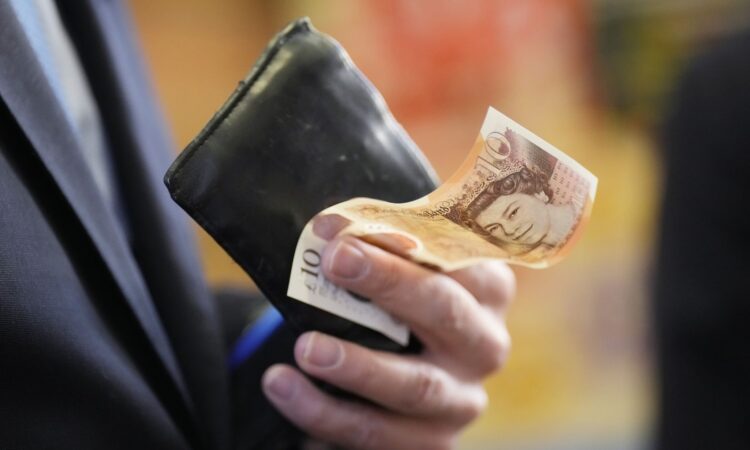
The scale of the problem first emerged in 2021 when a freedom of information request from pension provider PensionBee to the UK tax authority, HMRC, suggested that 80% of those eligible, some one million people a year, were not claiming the additional relief. The data referenced the tax years 2016/2017 to 2018/2019 and revealed a consistent pattern of under-claiming.
The issue has probably become more acute since. UK personal income tax allowances have effectively been frozen since 2019/2020 (barring a minor increase in 2021/2022), which HMRC estimates has already moved 1.7 million formerly basic-rate taxpayers into the higher tax bracket. The tax authority further estimates that another 2.4 million will become higher-rate taxpayers by the time the freeze is set to end in 2028. If those accustomed to paying higher taxes have been failing to claim their full relief, it’s unlikely that those inadvertently entering the higher tax band will be any better informed.
The problem arises because, for many higher-rate taxpayers, relief at the basic rate of 20% is applied automatically to contributions to personal and company pension contributions. Unbeknownst to many, it seems, the additional 20% must be claimed separately.
Let’s consider some hypothetical numbers. If, as a basic-rate taxpayer, you contribute £80 to a Self Invested Personal Pension (SIPP), an additional £20 ($24) of tax relief from the government will appear in your account automatically within a matter of weeks, sometimes days. So adding £100 to your pension costs just £80 once tax relief is factored in.
The deal is even better if you are a higher-rate taxpayer. You are entitled to tax relief at your marginal tax rate of 40% (or 45% if you are an additional-rate taxpayer). For a 40% taxpayer, a contribution of just £60 would attract £40 of tax relief. Scaling these numbers up, a higher-rate taxpayer contributing the annual limit to a pension of £40,000 would only actually need to stump up £24,000 with tax relief making up the additional £16,000.
The catch is that, for many, only half of that relief is paid automatically. For all SIPPs and many company pension schemes, the additional relief (in this case £8,000) must be claimed separately. This is what a million or more people are missing year in and year out. And for those even aware of the additional tax relief, the process of claiming it is so obnoxious it’s seemingly designed to discourage all but the most determined.
There are two ways of applying. The most common is via the self-assessment tax return. Unfortunately many of those affected don’t actually complete an annual tax return. You need only earn more than £50,270 to be a higher-rate taxpayer, but, for those in regular paid employment, completing a tax return is only mandatory if you earn £100,000 or more.
Filing a tax return is not generally something you would volunteer to do, even if there was a financial incentive. A hint of the complexity is that the guidance notes are even longer than the return itself. The manner in which the questions are phrased is also obtuse. Question one for example requires you to enter “Payments to registered pension schemes where basic rate tax relief will be claimed by your pension provider (called ‘relief at source’). Enter the payments and basic rate tax.”
This relates to personal pensions, most commonly SIPPs. What is required here is for you to add together your SIPP contributions in the given tax year plus the basic rate of tax relief already received.
If you are making a claim regarding your employer’s scheme, you will need to know whether your pension contributions are taken out of your pay before or after deducting income tax. Your employer should know this. If the pension contributions are deducted from your post-tax income, you will, most likely, have to claim the additional relief yourself.
If you have an aversion to tax returns, and few would blame you if you did, it is possible to call or write to HMRC.
The good news is that if you realize you have been missing out on higher-rate relief, it is possible to backdate claims by up to four years. Using the earlier example of a higher-rate taxpayer making the maximum contribution to their SIPP, this could provide a £32,000 boost to their pension pot, plus an additional £8,000 a year going forward.
The sheer scale of the problem highlights a systematic issue that goes far beyond having to claim tax relief twice to receive your full entitlement. Pension regulation and the tax code are both overly complex and have become increasingly more so with the introduction of a myriad of stealth taxes. It is not surprising that an issue that combines pensions and taxation has resulted in upwards of 80% of eligible higher-rate taxpayers not receiving their due.
But please persevere. If you can cut through the morass, it will be far easier to get what you’re entitled to in the future. If you remain unsure whether it’s worth the effort, ask yourself: Do you really want to leave Chancellor of the Exchequer Jeremy Hunt a tip?
More From Bloomberg Opinion:
• ChatGPT Shows Just How Far Europe Lags in Tech: Lionel Laurent
• Stop Panicking About Boomerang Kids: Alexis Leondis
• Why Aren’t We All Rich Yet?: Merryn Somerset Webb
This column does not necessarily reflect the opinion of the editorial board or Bloomberg LP and its owners.
Stuart Trow is co-host of “Money, Money, Money” on Switch Radio and author of “The Bluffer’s Guide to Economics.” Previously, he was a strategist at the European Bank for Reconstruction and Development.
More stories like this are available on bloomberg.com/opinion






